(First published in the Royal Society of Arts William Shipley Group Bulletin 49 March 2016).
Introduction:
2016 marks the 160th anniversary of the beginning of the Society examinations.
A Short History:
The history of examinations provides a fascinating insight into how the education system developed in Britain. Various assessment methods had been introduced by universities, the College of Preceptors and a number of independent self-help institutions in earlier times but public examinations were only started after the mid-18th century. Examinations and certificates had been awarded by Trinity College Dublin, Edinburgh College of Art both of whom pioneered testing before the 1850s.
In this article I will focus on the key role the Society of Arts (SA ) played in these developments particularly emphasising those in the early stages. I cannot hope to do justice to this vast topic in a short piece but the history will highlight many similar issues associated with the development of technical, commercial and vocational subjects in colleges and schools over the past two centuries. Inevitably their respective histories identify a number of factors that contributed to the slow and at times ad hoc development of a public system of examinations that included:
- The minimal support and involvement of successive governments in the early 19th century which reflected an attitude that government should not intervene directly in the development of education.
- The laissez-faire attitude that existed particularly in Victorian times – the view that individuals should be free to develop themselves and not be dependent on or expect intervention from the government. This approach established voluntarism across the field of technical education and training.
- The preoccupation with educational elitism which always valued the academic over practical/technical subjects and which is an attitude that sadly continues today.
- An education provision structured on a hierarchical and socially differentiated system reflecting class divisions which basically meant different classes experienced different provision.
- The urge to promote and subsume practical/technical subjects into an academic subject culture often referred to as ‘academic drift’.
- The lack of interest from employers both in the development of technical education and its examinations. They were reluctant in appointing people who have attended school/other providers and/or those who had gained qualifications arguing that would have to pay them more!
The Society was founded in 1754 by William Shipley with the title the Society for the Encouragement of Arts, Manufactures and Commerce. It was granted a Royal Charter in 1847 and granted the right to use the title Royal in 1907. William Shipley was aware of the Dublin Society for Improving Husbandry, Manufactures and Other Useful Arts which awarded premiums for inventions. An excellent account of the Dublin Society is provided by Allan (1).
One of its first activities of the Society of Arts was to award prizes called premiums and financial rewards to inventors. These premiums were granted for a wide range of inventions and developments including improving machines in manufacturing and techniques used in industrial and agricultural processes. This clearly laid the foundations for developing a more comprehensive system of examinations particularly in association with the Mechanics’ Institutions movement (1). The development of the Society of Arts (SA) examinations was clearly linked to the Mechanics’ Institution and the Union that represented them.
The key person in the creation of the Union between the Society of Arts and the Mechanics’ Institutions was Henry/Harry Chester (1806-1868) who first proposed in 1853 a system of examinations for the Institutions and its members. The proposals advocated a scheme for examining and awarding certificates to the students attending the affiliated Institutes of the Union of Mechanics’ Institutions. Other influential individual involved in the development of the examinations were James Booth (1906?-1879) and James Hole (1820-1895) who were both heavily involved with the Society and the Mechanics’ Institutions movement. A number of writers have commented that Harry Chester (1806-1868) and James Hole (1820-1895) first instigated the debate about creating examinations whilst James Booth was largely responsible for bringing them into existence. (See website www.technicaleducation matters.org for biographies of these individuals).These three individuals were representative of the few who made significant contributions to the development of technical and commercial education and their associated examinations. One interesting and recurring aspect in the development of technical and commercial education and training was the role that a few far sighted individuals played in introducing various initiatives. In spite of resistance they persevered and remained committed to establishing a national system for technical education.
The first examinations for artisans were held in 1855 but proved unsuccessful because of the associated bureaucracy, complexity and an over-ambitious schedule of subjects and syllabuses. Only one candidate enrolled for a mathematics paper namely William Medcraft a chimney sweep who studied at the Belmont Mutual Improvement Society but was informed that no examinations would be staged that year. The examinations were remodelled and offered again in 1856 and 42 candidates enrolled. William Medcraft entered again and gained pass certificates in arithmetic, algebra and geometry. Papers were set in Agriculture, Book-keeping, Botany, Chemistry, English Literature and Composition/ History, Freehand Drawing, Geography, German, Latin and Roman History, Mechanics, and Physiology. Candidates had to sit at least three subjects and a preliminary/qualifying examination in handwriting and spelling. Interesting to note that the Belmont Mutual Improvement Society which William Medcraft attended was an example of a few self-help organisations that existed along with the Mechanics’ Institutions, commercial and trade schools. These institutions did much to develop technical and commercial education and training but at the time did not possess the required critical mass to create a national system. It was not until the late 18th century that the technical education sector began to take shape in a way that we would recognise today following a number of major government sponsored Royal Commissions, Education Acts, increased government support and focussed funding. A good example of this was the use of ‘Whiskey Money’ following the Customs and Excise Act of 1890. It must be noted that the 1850s was a very important decade in the development of technical and commercial education largely influenced by the Great Exhibition and its consequences in which the Society was a major player. There were also a few strong advocates for technical education including George Birkbeck (1776-1841) , Henry Brougham (1778-1868) , Harry Chester (1806-1868), Henry Cole (1808-1882),James Hole (1820-1895), Thomas Huxley (1825-1895), Philip Magnus (1842-1933) , Lyon Playfair (1818-1898), Bernhard Samuelson (1820-1905) and Henry Solly (1813-1903) many of whom were associated with the work of the SA and its evolving examinations. (See a series of biographies on website referenced below).
A number of conditions were introduced on entry requirements to the examinations e.g. university graduates, undergraduates, students from learned societies, certificated schoolteachers and pupil teachers were not allowed to enter along with children under the age of 15. Also only three subjects could be taken. Boys attending classical schools were also barred from enrolling for the examinations.
Although the 1856 examinations enrolled very few candidates it highlighted the need to continue and cascade and in 1857 the Society’s examinations were extended to provincial centres when four centres were identified but only two of which were agreed by the Society as a start with examinations taking place in London and Huddersfield. After the 1857 examinations the initiative was deemed a success and fifty centres were designated but ultimately forty centres were actually active in thirty-two cities and towns across the country. The 1857 examinations enrolled approximately 1,100 candidates but only 50% passed the local preliminary/qualifying examinations which resulted in 288 candidates sitting the final examinations with 197 being successful. The pass rate for successful students was approximately 78%. The extension of centres across the country by the Society eventually hosted and administered the examinations offered by the government’s Department Science and Art (DSA) after 1859. With the advent of the DSA examination the Society had to review and reform some subjects e.g. freehand drawing was withdrawn in 1860 and a recasting of its schedules resulted in 1870 when 17 of 36 subjects were removed from the list of examination titles.
In spite of the shaky start the original members of the Board of Examiners included a number of influential individuals including Thomas Huxley who continued to stress the importance of the examinations. The Board of Examiners was replaced in 1857 by the Council of the Society of Arts which then established a system of paid examiners.
Subsequently the examination centres were extended geographically and the constraints on the institutions that could take the examinations were removed which resulted in increased numbers of candidates. Initially the examinations were limited to members of Mechanics’ Institutions and specifically to ‘artisan class’ which included clerks, farmers, labourers, mechanics, tradesmen and apprentices and the sons and daughters of tradesmen and farmers, assistants in shops and others who were not graduates. In addition the examinations were aimed at people who had left school and were in employment meaning the minimum age for entry was 16. The school leaving age was 12.
In 1859 the Society transferred the responsibility for examining the sciences to the Department of Science and Arts (DSA) whose aim was to introduce and encourage the teaching of science in schools.
The examinations quickly developed a commercial emphasis which has continued today. Shorthand was introduced in 1876 and typewriting in 1891 which proved successful enrolling clerical and professional workers. The Society did not receive any monetary assistance from the State but depended on subscriptions and benefactions of its supporters. It had also established such a good reputation in promoting the arts, science and manufacturing that it attracted many noticeable individuals as examiners and lecturers. The subjects were chosen and kept under review to represent the skills that were emerging during and after the Industrial Revolution.
The examinations were finally opened to everybody in 1882 and the Union of Institutions dissolved as the number of Mechanics’ Institutions declined with many transmuting into technical colleges which we recognise today. Other technical education and training providers were established by the government and local authorities so the Mechanics’ Institutions began to close. They achieved a great deal and provided the basis for the later development of technical and commercial institutions. As a result the examinations had to be self-supporting and fees were introduced in that year with one concession granted to adult students in evening classes. In addition the option of taking single subjects was introduced.
As a result of these reforms candidate numbers increased rapidly from 288 in 1858 to 2,325 in 1880. The numbers dipped dramatically to 695 in 1882 but then increased significantly to 2,474 in 1890 and 9,808 in 1900. Following the governments Technical Instruction Act of 1889 technical and commercial education gained even more impetus. Numbers had risen to 23,803 in 1905 after new regulations were introduced recognising examination success in three stages with two classes of pass being obtainable in the higher stages. Also a number of elementary tests were discontinued. 1911 witnessed approximately 30,000 candidates and by 1953 150,000 candidates presented themselves in 800 examining centres in Britain and Ireland the majority of them under the control of Local Education Authorities (LEAs). In 1974/75 session approximately 500,000 candidates sat the examinations.
Not only did the Society of Arts pioneer public examinations but the work done by Booth and colleagues provided a blue print for the examinations system that developed subsequently particularly in the school sector of education. The timing of examinations during the year, the production of syllabuses, the appointment of examiners and the subject profile were all later adopted by other examination bodies. Much of Booth’s work was shaped by his experience at Trinity College Dublin which possessed a first rate reputation in setting examinations long before its English counter parts.
The Technological Examinations:
The involvement of the Society of Arts in the development of technological examinations was very short lived but again laid the foundations for these strategically important subjects to be developed by other examining bodies particularly the City and Guilds Institute of London and later by the National Awards. The key figure in this development was John Donelly (1834-1902) who proposed the introduction of the technological examinations to the Council of the Society 1871. Donelly again proposed the examinations in 1873 arguing strongly that knowledge of techniques/skills in particular industries should be examined. The technological examinations were to be introduced alongside the existing examinations. Initially five subjects were to be offered namely carriage building, cotton manufacture, paper, silk and steel manufacture. The Council of the Society of which Booth was a member defined the structure and nature of the examinations. Their main purpose was to admit students from mechanics’ Institutions, commercial and trade schools. Identical techniques were used by the Department of Science and Art (DSA) comprising three grades: elementary, ordinary and honours. The new examinations enrolled very few candidates only 6 entered for three of the subjects. The number of subjects was increased in 1877 to 14 but still only attracted 68 candidates in 8 subjects. In 1878 167 candidates presented themselves for 10 subjects. The failure was due to the lack of support from employers and inadequate class facilities and qualified instructors. In 1879 the technological examinations were transferred to the newly established City and Guilds Institute of London (CGLI). However the Society of Arts technological examinations provided a strong foundation for CGLI to adopt and further develop the examinations e.g. syllabuses in a number of key industries.
The Society was then able to focus its attention and resources on further developing its examinations in the commercial subjects for which it is now renowned.
One classic example of the influence and impact of the Society of Arts examinations was on the creation of the Oxford and Cambridge Locals. The Society examinations represented the catalyst for the Locals which in turn established other school examinations managed from other universities and led to school examinations becoming a preserve of the universities.
Summary and Final Words:
Over the 160 years the Society has become a major domestic and international examining body and has continued throughout its long history to make significant contributions to commercial examinations, office skills, languages especially English as a foreign language (EFL), adult and work based education and training. The awards are now granted from foundation to post-graduate level. The number of entries have grown so significantly over the period that the Society in 1987 created a separate examinations board and subsequently in 1997 merged with the Oxford and Cambridge Boards to form OCR. The Society can be justifiably proud of its contributions to the examination system in this country. It pioneered examinations and produced templates and guide lines for how they were managed and delivered.
References.
Foden. F. ‘The Examiner, Henry Booth and the Origins of Common Examinations’. ISBN 0 907644 06 6. Leeds Studies in Adult and Continuing Education. 1989.
Hudson, D and Luckhurst. K. W. ‘The Royal Society of Arts’. ISBN 10 1135151040. London. Murray.
Journal of Society of Arts – various from 1853. An excellent publication.
Montgomery. R. J. ‘Examinations: An account of the evolution as administrative devices in England’. ASIN B000502D3E. Longmans. 1965.
Walker. M. A. ‘Examinations for the ‘Underprivileged’ in Victoria times; the Huddersfield Mechanics’ Institution and the Society for the encouragement of Arts, Manufactures and Commerce.’ WSG Research Paper 1. William Shipley Group. 2008.
Wood. H. T. ‘History of Society of Arts’. ASIN B013TCXUDO. London Murray. 1909.
- Allan. Royal Society of Arts Journal. November 1990.
- Website www.technicaleducationmatters.org provides a detailed set of histories, biographies and articles on technical and commercial education and training and examinations.




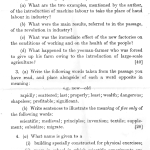



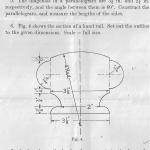
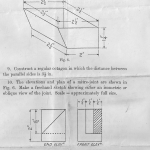



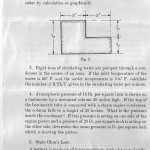









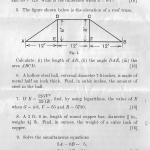



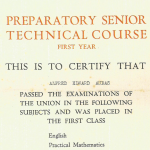




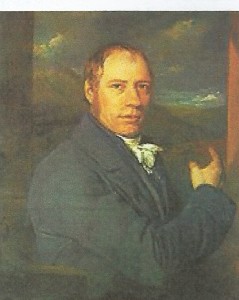
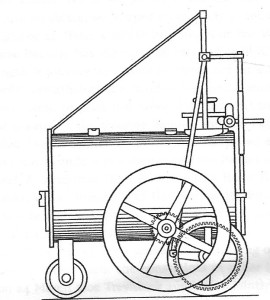
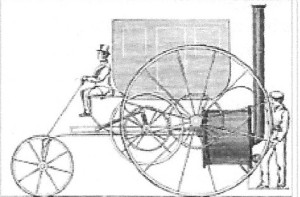
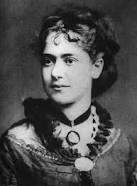
Recent Comments